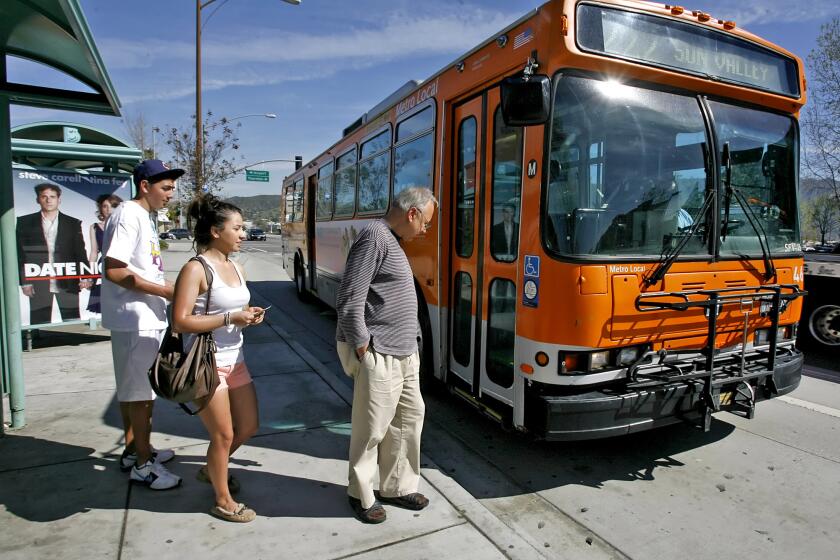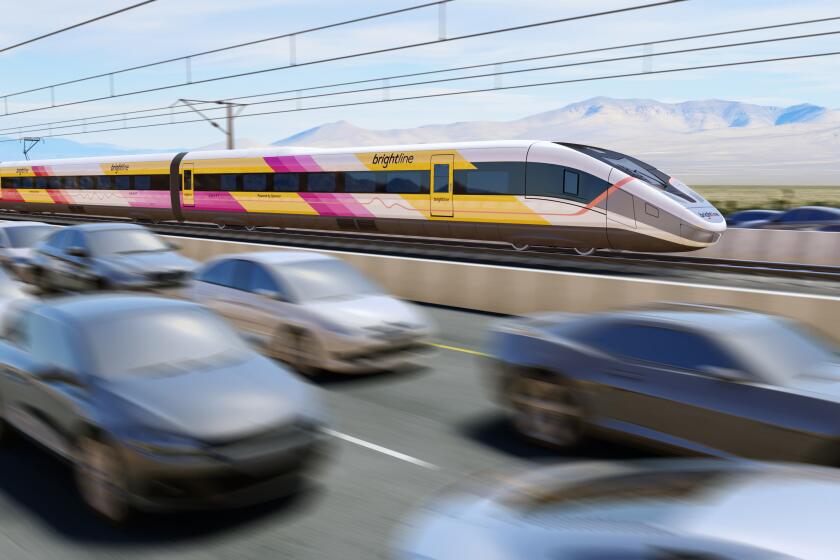The art of the safe stop
A yellow light means “caution” and “you should stop if you can do so safely,” according to the California Drivers Handbook, the instruction manual issued by the Department of Motor Vehicles.
But the advice is vague and provides no hint at the precision of the law in declaring when you can legally enter an intersection. You can be sure that most police officers know exactly what the California Motor Vehicle Code requires.
An outcry against red-light running has prompted a national campaign to reduce the practice of sailing through red lights illegally. At the same time, opponents of red-light cameras are alleging that intersections are being rigged to trick motorists into running lights.
The whole debate is creating confusion over an already highly technical and difficult-to-understand subject. To get to the heart of the issue, it’s important to understand precisely what is a legal entry into an intersection and how traffic engineers design yellow-light intervals.
Under the Motor Vehicle Code, a driver can legally enter an intersection if the vehicle’s front tires touch the limit line or pedestrian crosswalk line while a signal is still yellow, according to Sgt. Bill Languemi, a code instructor at the California Highway Patrol.
“It is cheating, but it is within the law,” he said.
In many cases, these limit lines and pedestrian crosswalk lines are positioned well back from the actual intersection, which is typically defined as the imaginary box formed by the curb lines of the road. I measured the intersection in front of my office, which is across from Los Angeles City Hall, and found the limit lines were 18 feet behind the actual intersection.
Thus, a car can seem to fly through an intersection on a red light and still be legal, so long as the tires hit the limit line on yellow. What’s more, the vehicle code gives that car legal possession of the intersection, and cars with the lateral green light must wait for the intersection to clear before entering.
As a result, engineers, who mostly work for individual cities, must design yellow-light intervals with enough time to allow traffic to clear safely.
A check around Southern California shows that cities have widely varying practices and that a motorist may get into trouble by assuming that all yellow lights -- even those used in the same size of intersection with the same speed limit -- have the same timing scheme.
Tom Jones, principal traffic engineer for Los Angeles, said lights in the city range from 3 seconds to 5.8 seconds, depending on the speed and size of the intersection. The city has long allowed 3.6 seconds for 35-mph zones, but, under new procedures implemented by the California Department of Transportation, it is upping the yellow interval on new control devices to 3.9 seconds for 35-mph zones.
Long Beach has a different practice. It provides the same 3.6 seconds for 35-mph intersections, but adds at least one full second to the end of red lights to allow vehicles to clear an intersection, according to city traffic engineer David Roseman. So, effectively, Long Beach provides 4.6 seconds to allow traffic to clear a controlled intersection.
“What has put this under a microscope is the red-light camera issue,” Roseman said. “Just a few split seconds more and somebody isn’t going to get a $371 ticket.”
By contrast, Los Angeles uses an all-red interval -- that moment when all lights at an intersection are red -- at relatively few intersections, since the city already allows extra yellow intervals under its new timing scheme, said Jones. All-reds obviously slow down traffic and can cause bottlenecks.
“It would be a loss of time for every cycle,” Jones said. “Nothing moves on all red, unless people are running the red light.”
Indeed.
A little math will show why fractions of a second are so important. At 35 mph, a vehicle is traveling about 51 feet per second. So, a 3.9-second yellow interval signals to a motorist to stop when the car is 199 feet behind the limit line. That’s nearly two-thirds of the length of a football field.
Without question, that’s plenty of time to stop at 35 mph.
Many critics of red-light cameras claim that cities routinely shorten the yellow-light interval to trick motorists into an illegal entry, thereby boosting revenues. In fact, many cities do just the opposite.
In Long Beach, Roseman sets the yellow-light interval for a 35-mph intersection at the timing appropriate for a 40-mph intersection, thereby adding 0.4 second to the yellow light. Los Angeles does not change its yellow-light timing for intersections with red-light cameras, however.
All this has put traffic engineers in the middle of an escalating battle between critics and proponents of red-light cameras.
The National Campaign to Stop Red Light Running strongly backs cameras. The group consists of national safety organizations, such as the Insurance Institute for Highway Safety and the Governors Highway Safety Assn., and law enforcement agencies.
On the other side is the National Motorist Assn., which claims that cities are using red-light cameras to raise millions of dollars by designing intersections with unsafe yellow-light intervals. Too often, local traffic engineers fail to conduct adequate engineering studies to justify yellow-light timing, according to the association’s spokesman, Chad Dornsife.
But engineers worry that if yellow-light intervals are too long, motorists will adapt and begin to game the system, not stopping when they see a yellow.
To some extent that is already happening: Drivers see a light change is occurring 199 feet from the intersection, but they still elect to go through it.
Ralph Vartabedian can be reached at ralph.vartabedian@
latimes.com.




